フィルターソリューション
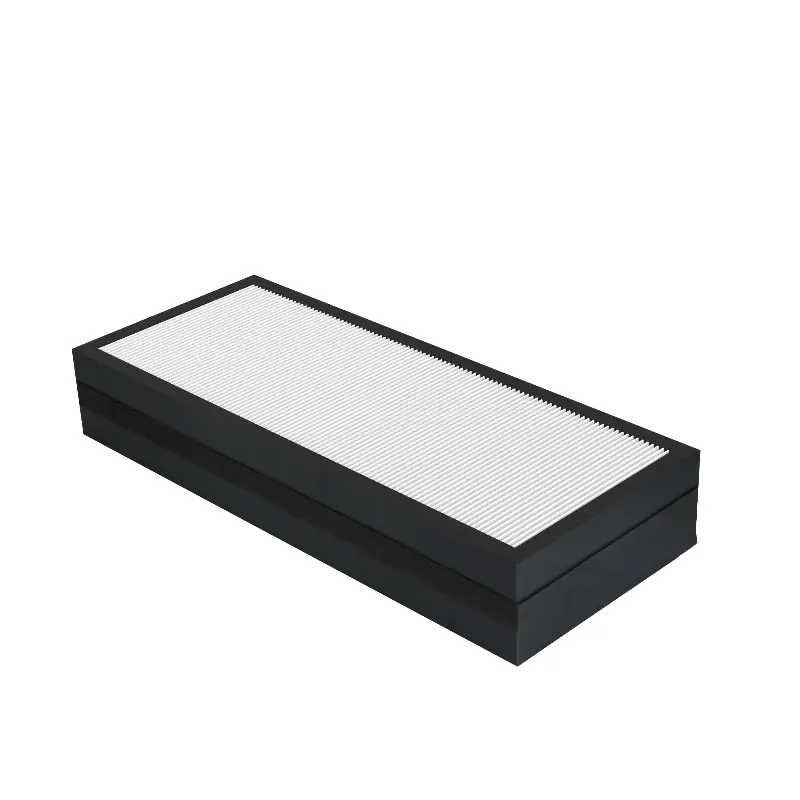
真のHEPAフィルター
当社の超低差圧(D/P)テクノロジーは、効率を損なうことなく優れたエアフローを実現します。メルトブローン・コアは、0.3μmの粒子を捕捉するために複雑に織り込まれており、卓越したろ過性能を発揮します。
| フィルタータイプ | 効率性 | D/P(その他) | D/P(ヒソ) |
|---|---|---|---|
| H11 | 95% | 15 Pa | 8Pa / 11Pa |
| H12 | 99.50% | 25 Pa | 13Pa / 18Pa |
| H13 | 99.97% | 30 Pa | 22Pa / 25Pa |
| H14 | 99.99% | 45 Pa | 30Pa / 35Pa |
| スタンダード EN 143、NaCl、0.3um、@5.33 cm/s | |||
Microbial Treatment Technology
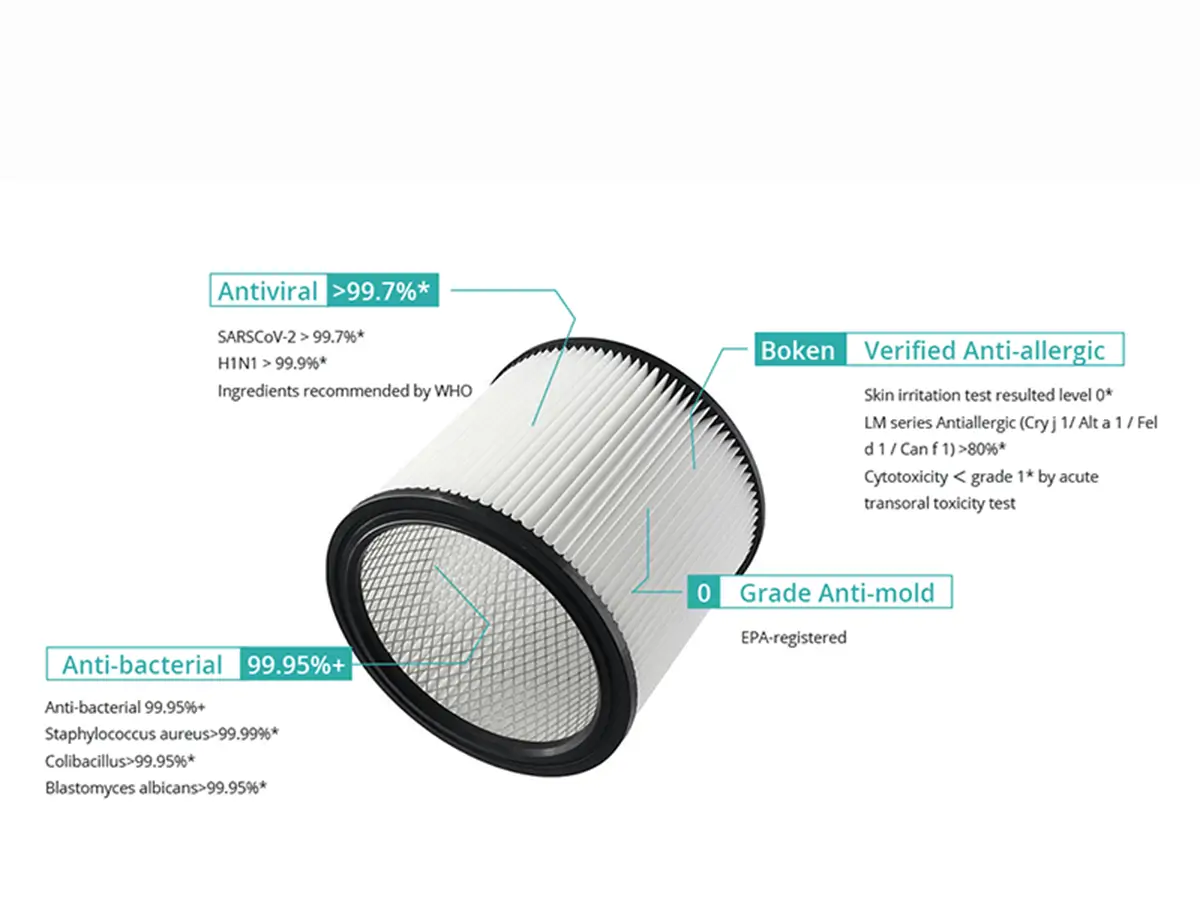 お問い合わせ
お問い合わせ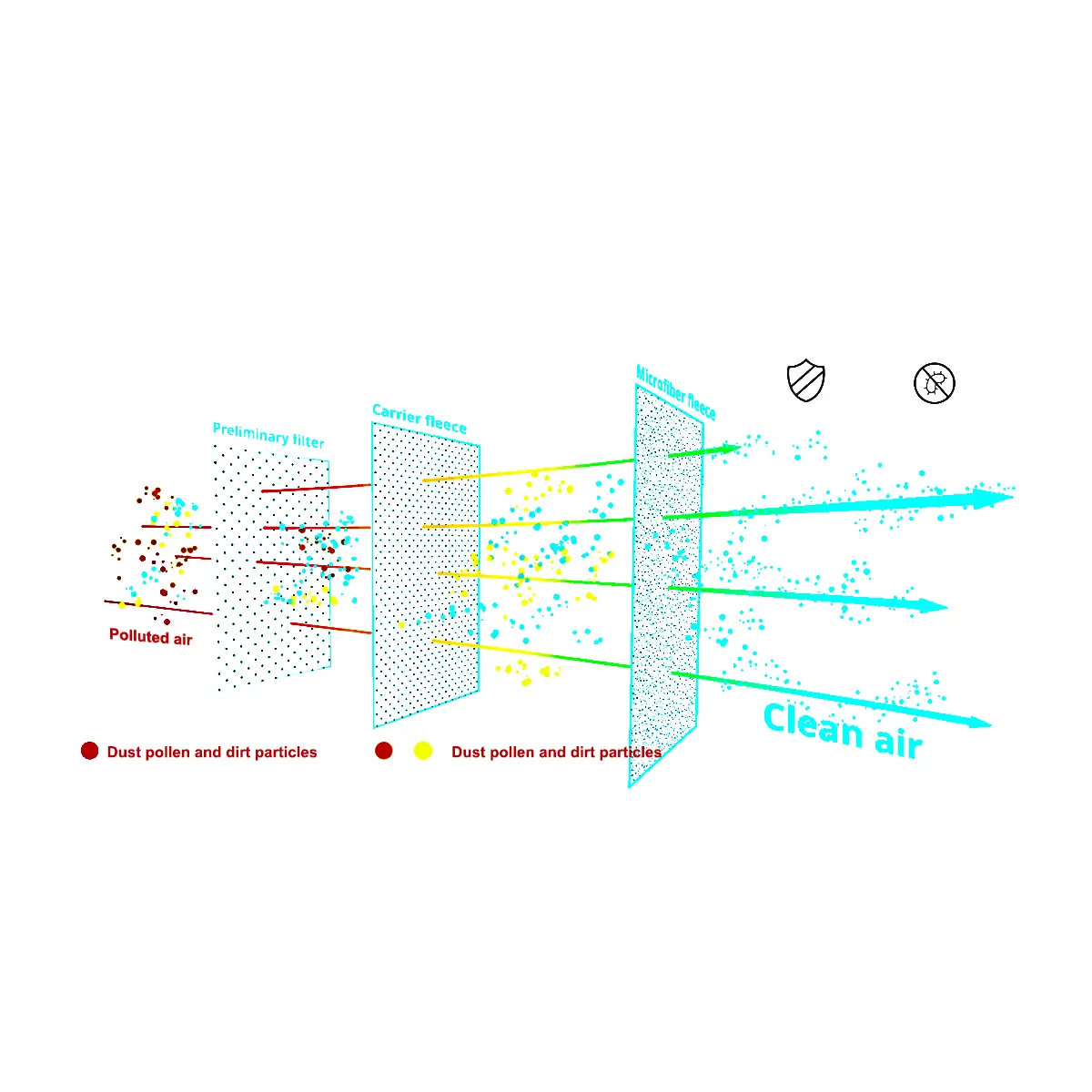
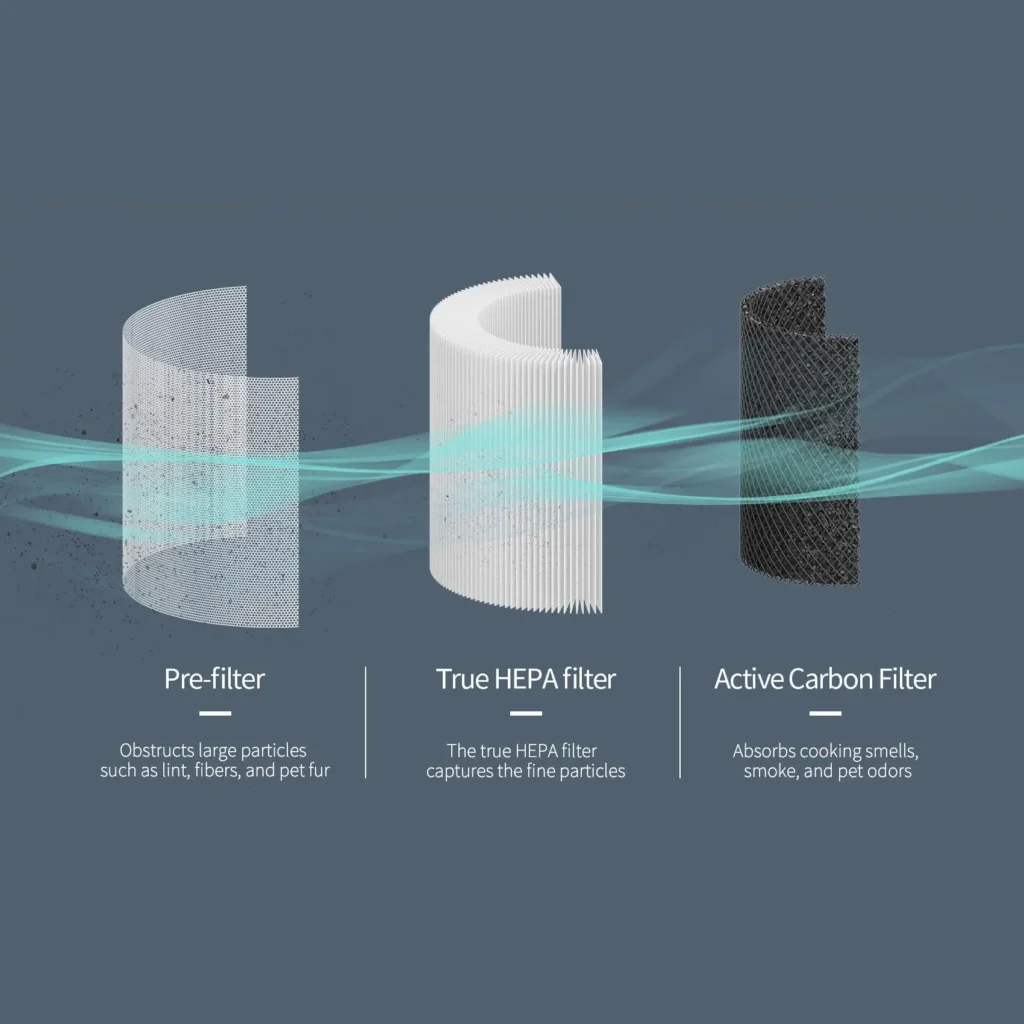
Modular Composite Filter
Pre-filter:
Captures large particles like dust, lint, pet hair, and fibers, helping extend the life of the main filters.
HEPA filter:
Effectively traps fine airborne particles and common allergens, helping to improve overall air quality.
Activated carbon:
Absorbs odors, harmful gases, VOCs, smoke, and household fumes—ensuring a fresher indoor environment.
High Dust Holding Capacity Technology
Electrostatic Adsorption
The filter material is given an electrostatic charge through special processes, which enables it to attract and hold airborne particles through electrostatic forces.
Physical Interception
The filter material has small pores and tightly bound fibers, forming a dense physical barrier that prevents particles from passing through.
High Dust Holding Capacity
Principle: The structure of the filter material is optimized to increase the surface area of the fibers and the depth of the pores, allowing it to hold more dust.
High Efficiency and Longevity
Principle: The combination of electrostatic adsorption and physical interception ensures stable performance of the filter material, maintaining high-efficiency filtration over the long term.

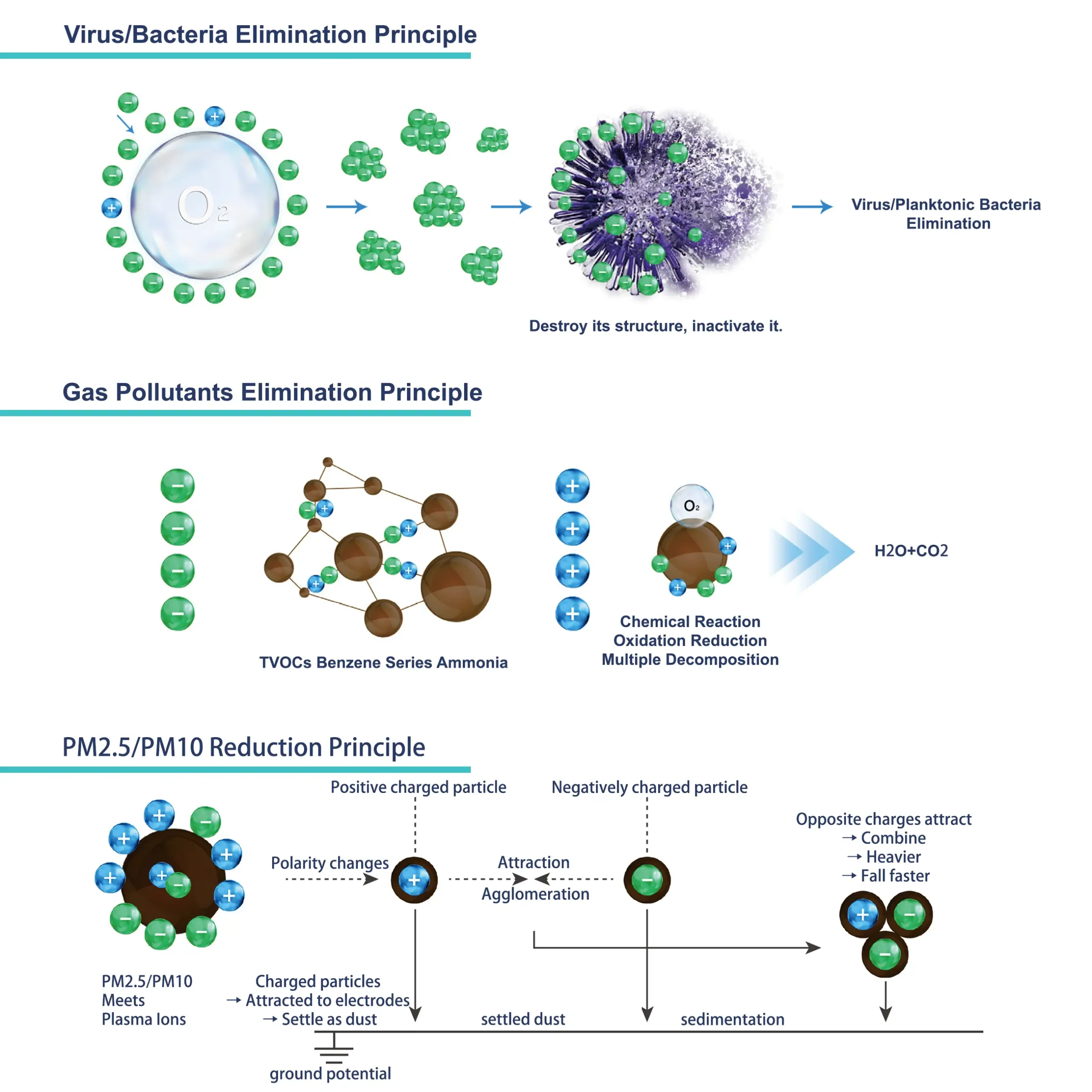
プラズマ技術
Plasma ions are generated by applying a high-voltage electric field that separates positive and negative charges in the air. These ions form a dense cloud of charged particles, known as ion clusters, which actively target and destroy harmful substances such as viruses, bacteria, and pollutants. The ions penetrate cell membranes and proteins, causing structural breakdown and rapid deactivation or decomposition.
Key Functions:
1. Virus Elimination
2. Bacteria Elimination
3. Gas Pollutant Decomposition
4. PM2.5/PM10 Reduction
UVC Photocatalytic Germicidal Technology
-
UVC Emission: Matrix-array LED-UVC diodes produce short-wave UV (100–280 nm).
-
DNA/RNA Disruption: The light damages microbial DNA or RNA, stopping growth and replication.
-
Photocatalytic Oxidation: UV energizes the catalyst, generating electric charges that release oxygen and hydroxyl radicals.
-
Cell Membrane Degradation: These radicals rupture bacterial and viral membranes, destroying their genetic material and proteins.


Electrostatic Precipitator Coupled Catalytic Technology
-
ESP (Electrostatic Precipitator) – A high-voltage field charges and captures particles down to 0.01 µm and inactivates airborne microbes, but it also generates ozone.
-
CC (Coupled Catalyst) – A room-temperature catalyst instantly converts any residual O₃ to O₂ and oxidises common VOCs with virtually no pressure loss or extra power draw.
-
ESPCC – By positioning the CC stage directly after the ESP, unites ultrafine particle removal and microbial kill with ozone and VOC elimination in one compact, energy-efficient module that delivers truly clean indoor air.
